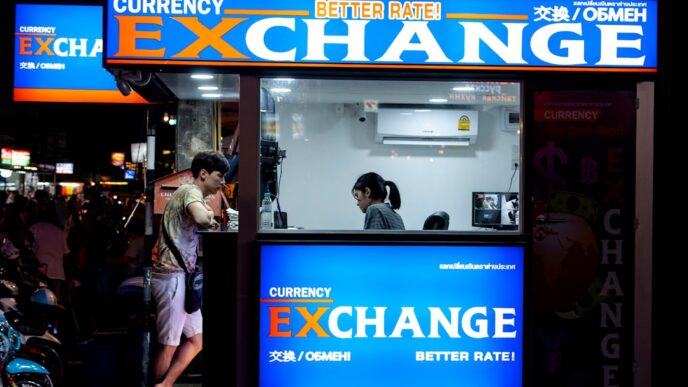In traditional economics, people are assumed to act rationally, always making decisions that maximize their financial well-being. But reality tells a different story. Enter behavioral economics—a fascinating field that blends insights from psychology and economics to better understand how real people make financial decisions. It explores the often irrational, emotional, and psychological factors that lead us to make choices that are sometimes against our best financial interests.
What is Behavioral Economics?
Behavioral economics is a branch of economics that studies how psychological, social, and emotional factors impact economic decision-making. It challenges the notion that humans are always rational actors and instead delves into how cognitive biases and emotions can influence financial behavior.
In contrast to the classical model of rational behavior, behavioral economics suggests that human decision-making is often influenced by factors such as:
- Cognitive Biases: Mental shortcuts that can lead to errors in judgment.
- Emotions: Feelings like fear, excitement, or anxiety that sway decision-making.
- Social Influence: Peer pressure or societal norms that affect how we spend or save.
Key Concepts in Behavioral Economics
- Loss Aversion
Humans tend to feel the pain of losing money more intensely than the joy of gaining it. This concept, known as loss aversion, explains why people might hold onto losing stocks for too long or why they avoid risks that could lead to substantial rewards. - Anchoring
Anchoring refers to the tendency to rely heavily on the first piece of information encountered when making decisions. For example, if a person sees a jacket priced at $500 and later sees it on sale for $300, they may perceive it as a good deal, even if $300 is still expensive. - Confirmation Bias
People often look for information that confirms their pre-existing beliefs while ignoring contradictory evidence. This is known as confirmation bias. In the world of investing, this bias can lead to poor decision-making when investors only seek information that supports their market view. - Herd Behavior
Ever wonder why stock market bubbles form? Herd behavior plays a large role. People tend to follow what others are doing, believing that the collective wisdom must be right. This herd mentality can lead to irrational exuberance or panic selling. - Mental Accounting
Humans have a tendency to divide money into different “mental accounts” even when it doesn’t make sense to do so. For instance, you might treat a $500 tax refund as “fun money” while being reluctant to tap into savings for the same amount of discretionary spending.
How Behavioral Economics Impacts Financial Decisions
Spending Habits
One of the primary areas where behavioral economics comes into play is in spending. For instance, the use of credit cards makes it easier to spend money than using cash, as the “pain” of paying is delayed. This leads to higher spending and, often, debt.
Additionally, sales promotions tap into our emotions and cognitive biases. We might end up buying more than we need just because something is “50% off,” anchoring our decision on the original price rather than assessing if we really need the item.
Investing Behavior
Investing is an area where psychological biases can have a significant impact. Behavioral economics explains phenomena like:
- Overconfidence: Investors often believe they have better information or insights than others, leading to excessive risk-taking.
- Fear of Missing Out (FOMO): Many investors jump into markets when they see prices rising, driven by the fear of missing out on potential profits.
- Regret Aversion: Investors may avoid making decisions because they fear future regret, even if taking action could be beneficial.
Saving for Retirement
People generally find it difficult to save for the long term, even when they know it’s important. Behavioral economics shows that present bias—the tendency to value immediate rewards more than future ones—prevents many from contributing adequately to their retirement savings. Automatic enrollment in retirement plans and automatic increases in contribution rates are strategies informed by behavioral economics to overcome this bias.
Real-World Applications of Behavioral Economics
Governments and companies are increasingly using principles of behavioral economics to influence decision-making for the better. Some applications include:
- Nudging
Nudge theory, popularized by behavioral economist Richard Thaler, involves gently guiding people toward better decisions without restricting their freedom of choice. For example, many employers now automatically enroll employees in retirement savings plans, relying on inertia to encourage savings. - Defaults
Behavioral economics suggests that making defaults work in favor of better outcomes can significantly improve decision-making. For instance, making organ donation opt-out rather than opt-in has been shown to increase donation rates. - Framing Effects
The way choices are framed can heavily influence decision-making. For example, people are more likely to choose a surgery with a “90% survival rate” rather than one with a “10% mortality rate,” even though the two are identical in statistical terms.
The Role of Emotions in Financial Decisions
While cognitive biases explain a lot of irrational financial behavior, emotions play an equally critical role. Financial decisions are rarely made in a vacuum of pure logic. Feelings of fear, greed, anxiety, and even hope can skew judgment and lead to suboptimal decisions.
During times of economic uncertainty, for example, people may hold on to cash rather than invest, even when investments could yield better long-term returns. Similarly, during market booms, excitement and overconfidence might lead investors to take excessive risks.
Overcoming Biases and Making Better Decisions
While cognitive biases and emotional influences are part of human nature, there are strategies you can use to make better financial decisions:
- Awareness: Simply being aware of common biases like overconfidence or loss aversion can help mitigate their impact.
- Diversification: Spread your investments across a wide range of asset classes to minimize the risk of emotional decision-making.
- Use Rules of Thumb: Set up rules, such as automatically contributing a percentage of your income to savings or investments, to avoid acting impulsively.
Behavioral economics sheds light on the often irrational side of financial decision-making. By understanding how psychology influences your financial choices, you can better guard against cognitive biases and emotional pitfalls. Whether you’re managing everyday spending, investing, or saving for the future, recognizing these tendencies can help you make more informed, rational decisions.













